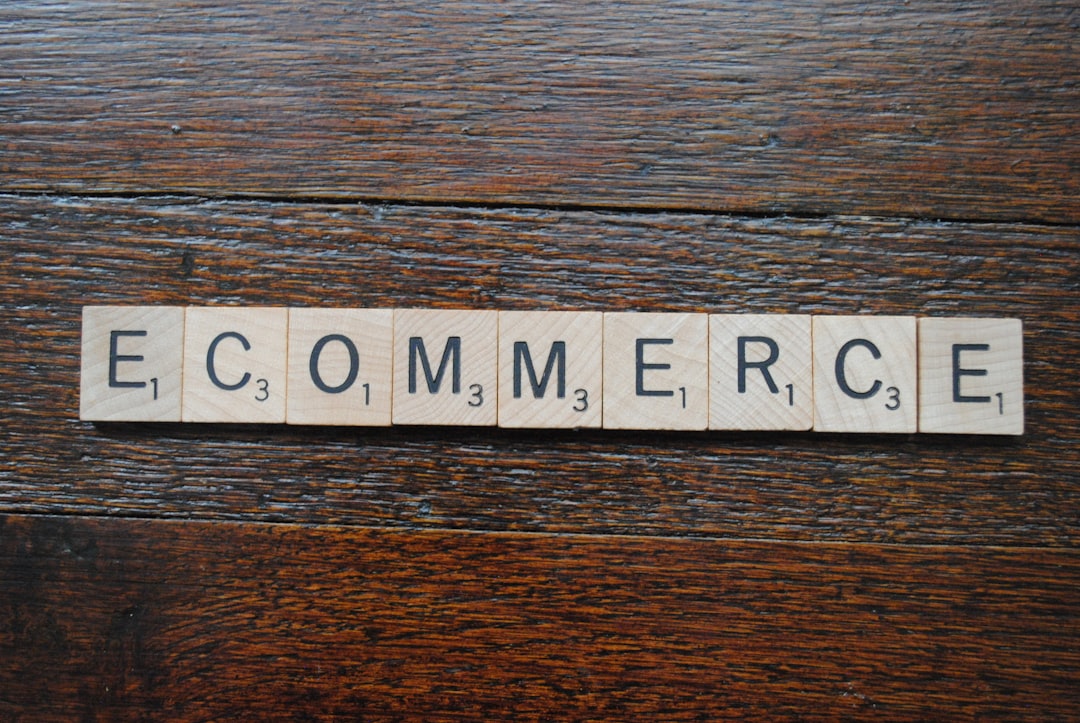Top Trending Products to Sell Online in 2025: A Complete Guide for Ecommerce Success
Unlock ecommerce success in 2025 by discovering top trending products, learning how to spot early signals, validate demand through data, and master multi-platform selling powered by social commerce and consumer insights.
Key Takeaways
- Early trend spotting is crucial to gaining a competitive edge and minimizing market saturation.
- Use tools like Google Trends, Amazon Best Sellers, and Shopify Analytics to validate product demand and profitability.
- Sustainability, wellness, smart tech, fashion, home gadgets, pet products, and subscription services dominate the 2025 product landscape.
- Expand reach and reduce risk with multi-platform selling and crosslisting using tools like Vendoo.
- Tap into social commerce via TikTok Shop, Instagram, and influencer marketing to drive viral product discovery and sales.
- Consumer preferences favor authenticity, convenience, inclusivity, and values-driven brands.
- Maintain agility by testing small, optimizing listings, refining pricing, and pivoting product strategies as trends evolve.
Table of Contents
- Why Early Trend Spotting Is Essential
- Data-Driven Product Validation
- Trending Product Categories to Watch
- Multi-Platform Selling and Crosslisting
- How Social Commerce Drives Viral Marketing
- Consumer Behavior Trends Shaping 2025
- Building a Winning Product Strategy
- Real-World Success Stories
- Conclusion
- FAQ
1. Why Early Trend Spotting Is Essential for Selling Trending Products Online
Timing is everything in ecommerce. Identifying rising trends before they peak enables you to position your products strategically, outpacing competitors and gaining market share at a lower cost.
How to Identify Emerging Trends Early
- Follow Social Signals: Monitor platforms like TikTok, Instagram, and YouTube for viral hashtags such as #TikTokMadeMeBuyIt and #AmazonFinds.
- Watch Engagement Metrics: High likes, shares, and saves on videos point to growing excitement around products.
- Track Google Trends: Analyze keyword search increases to detect upward patterns.
- Analyze Marketplace Best Sellers: Use data from Amazon and Shopify to spot top-performing or newly popular SKUs.
For example, barrel-fit jeans experienced a 500% surge in search interest, while beef tallow moisturizers rose 400%.
“Regularly following niche influencers, checking Google Trends daily, and exploring micro-niches are proven steps to discovering profitable product opportunities early.”
Getting in early means lower competition and greater visibility as demand grows.
2. Data-Driven Product Validation: Ensuring Your Trending Product Sells
Chasing trends without validation is risky. Use data to confirm that demand is lasting and profit potential is real.
Tools to Validate a Product Idea
- Google Trends: Identify steady growth or sudden spikes in searches.
- Amazon Best Sellers: Monitor top products by category for live sales insights.
- Etsy Metrics: Assess interest in handcrafted, vintage, or niche items.
- Shopify Analytics: Track category sales volume changes and trends.
What to Evaluate
- Sustained Demand: Focus on products with ongoing or repeat interest.
- Customer Sentiment: Read reviews and social feedback for genuine appeal.
- Profit Margins: Factor in shipping, marketing, and platform fees for net profits.
- Scalability: Choose inventory-friendly and low startup cost products.
Pet wellness supplements, for example, have shown an 89% increase in sales indicating long-term potential.
How to Test Your Product
- Launch small-batch or print-on-demand runs to minimize upfront costs.
- Optimize product listings with high-quality images and keyword-rich descriptions.
- Monitor performance across platforms like Etsy, eBay, and Poshmark.
- Adjust pricing and marketing based on customer response and sales data.
Data-driven validation keeps your business agile and reduces costly mistakes.
3. Trending Product Categories to Watch for in 2025: Sustainability, Wellness, Tech, and More
Knowing which categories attract consumer attention helps you stock the right products. In 2025, these niches are poised for growth.
1. Sustainability & Eco-Friendly Products
- Reusable water bottles by brands like Stanley Quencher and Owala dominate social buzz.
- Refillable cleaners, silicone utensils, and compostable packaging.
- Organic apparel expected to grow 10% annually.
- Solar chargers and ice packs targeted at eco-conscious adventurers.
- Organic pet food and eco-friendly pet accessories in a booming $419 billion industry.
2. Wellness & Self-Care Products
- Beef tallow moisturizers saw 400% growth in searches.
- Facial peels, sleep bonnets, blue light therapy lamps, sauna blankets.
- Supplements such as herbal blends, ADHD-supportive formulas, and mushroom chocolates.
3. Tech & Smart Home Devices
- Wearables including smartwatches, fitness trackers, and smart rings.
- Portable kitchen gadgets like mini waffle makers and smart countertop devices.
- Ecommerce innovations such as AR try-ons and AI shopping assistants.
4. Fashion & Accessories
- Barrel fit jeans with a 500% rise in search interest.
- Shapewear, bodysuits, and sustainable apparel made from organic fabrics.
- Viral accessories such as cowboy hats (+49% in sales), vintage jewelry, and custom pieces.
5. Home & Kitchen Gadgets
- Insulated tumblers like the Stanley Quencher maintain popularity.
- Compact appliances including countertop ice makers and multifunction grills.
- DIY craft kits and creative hobby products are making a comeback.
6. Pet Supplies
- Organic pet food and litter that meet clean-label standards.
- Travel accessories tailored to pet owners on the go.
7. Subscription Services
- Meal kits and healthy snack boxes.
- Pet care and grooming subscription boxes, growing at an estimated 18% annually.
These categories align with shifting consumer values and offer fertile ground for ecommerce growth. Discover more via Shopify’s 2025 ecommerce trends.
4. Multi-Platform Selling and Crosslisting: Maximizing Reach and Efficiency
Relying on one marketplace limits your exposure and insights. A multi-channel presence broadens your audience and mitigates risks.
Why Multi-Platform Selling Works
- Reach diverse buyer groups on eBay, Etsy, Poshmark, Mercari, and Depop.
- Gain faster feedback on what sells where to adapt your inventory and marketing.
- Reduce dependency on a single platform’s algorithm or policy changes.
Boost Efficiency with Tools Like Vendoo
- Simultaneously post listings across multiple marketplaces.
- Sync inventory to avoid overselling and stockouts.
- Edit pricing and product details from a centralized dashboard.
Tips for Crosslisting Success
- Customize your listing language and keywords to fit each platform’s audience.
- Monitor competitor pricing to stay competitive yet profitable.
- Adjust listings seasonally and prepare for demand fluctuations.
Crosslisting accelerates product testing and builds a resilient business structure.
5. How Social Commerce Drives Viral Marketing of Trending Products
Social media platforms blend entertainment and shopping, enabling instant discovery and purchase.
Where Social Shopping Happens
- TikTok Shop: Shoppable videos and live streams boost average transaction values, with phone accessories averaging $12.60 per sale.
- Instagram and YouTube Live: Influencer-hosted live events combine entertainment and direct buying.
Amplify Reach with Influencer Marketing
- Partner with influencers to authentically showcase your products.
- Encourage user-generated content featuring viral hashtags like #TikTokMadeMeBuyIt.
- Utilize trending sounds, effects, and short-form videos to spark engagement.
Drive Engagement Through Visual Storytelling
Mobile-first, dynamic clips quickly capture attention and foster trust. Brands like SKIMS excelled by combining viral campaigns with celebrity partnerships to build lasting success.
Learn more about social ecommerce tools via TikTok’s Business platform.
6. Consumer Behavior Trends Shaping 2025 Product Demand
Understanding what drives purchases empowers smarter product selection.
What Today’s Shoppers Value
- Sustainability: 68% of buyers prioritize eco-friendly brands offering reusable and biodegradable products.
- Wellness: Health and self-care are seen as ongoing lifestyle investments.
- Convenience: Time-saving, multifunctional gadgets are highly sought after.
- Authenticity: Transparent, purpose-driven brands resonate more than those chasing fads.
- Inclusivity: Gender-neutral and inclusive product designs are increasingly standard.
Align your offerings with these values to better connect with modern consumers. For deeper insights, visit Nielsen’s 2025 Sustainability Insights.
7. Building a Winning Product Strategy for Trending Ecommerce Success
Turn your research into revenue with a systematic, flexible approach.
Begin with Small Tests
- Start with modest inventory or dropshipping to reduce financial risk.
- Validate interest before scaling production or marketing efforts.
Fine-Tune Listings
- Use keyword-optimized and engaging titles.
- Include professional photos and videos showcasing benefits and usage.
- Highlight value proposition and differentiators clearly.
Stay Agile with Pricing and Timing
- Track seasonal demand and competitor pricing.
- Adjust your strategy quickly in response to market changes.
Be Ready to Pivot
- Refresh your product mix regularly to stay relevant.
- Monitor analytics and social conversations for shifts in consumer preferences.
Streamline Your Operations
- Use inventory software to sync stock across all sales channels.
- Partner with fulfillment companies supporting eco-friendly packaging and fast shipping.
By combining trend alignment with operational excellence, you prepare your store for sustainable growth.
8. Real-World Success Stories from Trending Products in 2025
These entrepreneurs exemplify how trend research, market fit, and focused execution lead to ecommerce success:
- Alex Drexler (Alex Mill): Filled a men’s shirting gap with refined designs combining classic materials and thoughtful details.
- Ann McFerran (Glamnetic): Revolutionized magnetic lashes, raising category standards and securing major retail partnerships.
- David Levy: Crowdfunded a portable tabletop grill, raising $20,000 and generating 90 sales in one month by targeting outdoor cooking enthusiasts.
- John Murphy: Built an electric bike dropshipping business, leveraging niche content to attract motivated buyers.
- SKIMS: Leveraged inclusivity and influencer marketing to disrupt shapewear and online fashion storytelling.
Their stories confirm the importance of aligning product ideas with market timing and consumer values.
Conclusion: Capitalize on 2025’s Top Trending Products with Smart Ecommerce Tactics
Success in 2025’s competitive ecommerce market hinges on strategy:
- Spot trends early to gain crucial advantage.
- Use data to validate product potential and profitability.
- Sell across multiple platforms to widen reach and accelerate learning.
- Harness social commerce to amplify organic growth and viral exposure.
- Align with consumer values—especially sustainability, wellness, and authenticity.
- Stay nimble and ready to pivot as trends evolve.
Adopt these tactics to confidently seize emerging ecommerce opportunities in 2025 and beyond.
For additional expert advice and ecommerce solutions, visit Store.virventures and discover how we help sellers thrive.
FAQ
Q1: How do I spot a trending product early?
Follow social media platforms like TikTok and Instagram for viral hashtags, monitor engagement metrics on product-related posts, track keyword growth using Google Trends, and analyze best-seller lists on marketplaces such as Amazon and Shopify.
Q2: What tools can I use to validate product demand?
Useful tools include Google Trends, Amazon Best Sellers, Etsy metrics, and Shopify Analytics. These allow you to track demand trends, customer sentiment, and sales velocity.
Q3: Why is multi-platform selling important?
Selling on multiple platforms expands your audience, reduces risk from changes on one marketplace, provides faster feedback, and increases your overall sales potential. Tools like Vendoo simplify this process.
Q4: How can social commerce help my ecommerce business?
Social commerce integrates product discovery, engagement, and purchase within social platforms like TikTok and Instagram. It leverages viral content and influencer marketing to amplify reach and accelerate sales conversion.
Q5: What consumer values should guide my product selection in 2025?
Focus on sustainability, wellness, authenticity, convenience, and inclusivity. Products that align with these values resonate more deeply with modern shoppers and support long-term brand loyalty.







